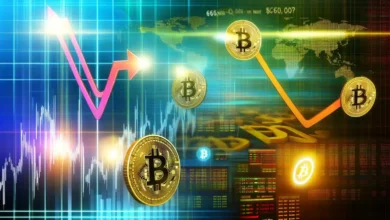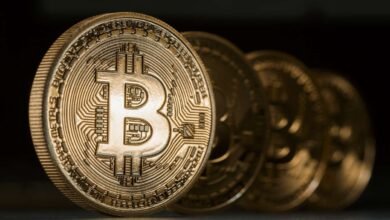
Decentralized payment systems, like XRP, are revolutionizing the way we conduct financial transactions for
several key reasons. These systems are fundamentally changing the payments landscape, making it more efficient, secure, and accessible, especially in an increasingly interconnected world. Here’s why decentralized systems like XRP are transforming payments:
1. Speed
- Traditional payment methods, especially for international payments, can take several days due to the involvement of intermediaries, time zone differences, and currency conversion processes.
- XRP, as a decentralized payment system, enables near-instant settlement, processing transactions in 3-5 seconds. This speed is crucial for businesses and individuals who need to make payments quickly and efficiently, whether for cross-border trade or real-time transactions.
2. Lower Transaction Costs
- Traditional payment systems, particularly for cross-border transactions, often involve high fees due to the involvement of multiple banks, payment processors, and currency exchanges. These fees can be a significant burden, especially for smaller businesses or individuals sending small amounts of money.
- XRP transactions, on the other hand, typically come with minimal fees, sometimes less than a fraction of a cent. By removing intermediaries and offering a direct peer-to-peer payment system, decentralized payment systems dramatically reduce transaction costs, making them a more cost-effective option for global transactions.
3. Access to Global Payments
- Traditional financial systems are often restricted by geographic and regulatory boundaries, limiting access to payments for people in certain regions or those who are unbanked or underbanked. In many parts of the world, people face barriers to accessing banking services, which prevents them from making or receiving payments easily.
- XRP and other decentralized payment systems operate globally, allowing anyone with internet access to participate in the financial system. They bypass geographical barriers and open the door to financial inclusion by providing access to low-cost, fast, and secure payment solutions for individuals and businesses in underserved regions.
4. Security and Trust
- Traditional payment systems rely heavily on central authorities (banks, payment processors) to ensure security and trust in transactions. However, these centralized entities are vulnerable to hacking, fraud, and corruption, and their operations can be disrupted by technical issues or even political interventions.
- XRP, as a decentralized system, uses blockchain technology, which is secure, transparent, and immutable. Once a transaction is recorded on the blockchain, it cannot be altered or reversed, ensuring the integrity of the payment. Additionally, decentralization reduces the risk of a single point of failure, making the network more resilient to attacks and failures.
5. Financial Sovereignty
- In traditional payment systems, banks and financial institutions have significant control over users’ money. They can impose restrictions, freeze accounts, or block transactions based on certain policies or regulations.
- Decentralized systems like XRP give users full control over their funds. Since there are no intermediaries, users can send and receive payments without relying on banks or central authorities. This ownership and autonomy over personal finances is a key aspect of financial sovereignty.
6. Censorship Resistance
- Traditional financial systems can be subject to political censorship or government interference. Governments can freeze accounts, block payments, or impose sanctions on certain individuals, organizations, or countries.
- XRP, being decentralized, is resistant to censorship. Since the network isn’t controlled by any central authority, no single entity can block or reverse transactions, offering individuals and organizations greater freedom and protection from unwanted interference.
7. Transparency and Trustlessness
- In traditional payment systems, trust is placed in the intermediaries (banks or payment processors) to settle payments fairly and accurately. This often requires individuals to trust institutions with their money and sensitive information.
- In decentralized networks like XRP, transactions are recorded on a public ledger (the blockchain), making them transparent and auditable by anyone. The decentralized nature of the system means that no central authority is needed to validate the transactions, making it trustless. Participants can rely on the blockchain’s security and consensus mechanisms, not on a third party.
8. No Middlemen or Intermediaries
- Traditional payments, especially for cross-border transactions, typically require a series of intermediaries, such as correspondent banks, payment processors, or clearinghouses. Each intermediary adds complexity, delays, and costs to the transaction.
- With XRP, payments are directly transferred from one party to another without intermediaries. This peer-to-peer nature streamlines the payment process, reducing both the time and costs associated with intermediary services.
9. Innovation and New Use Cases
- Traditional payment systems are often limited by legacy infrastructure, which can be slow to adapt to new technologies and use cases.
- Decentralized networks like XRP and the broader blockchain ecosystem allow for innovation in payment solutions. New use cases, such as micropayments, smart contracts, and tokenized assets, are becoming more feasible, enabling users to programmatically automate payments and interact with blockchain-based applications for a wide range of financial services beyond just basic payments.
10. Interoperability
- One of the challenges with traditional financial systems is the lack of interoperability between different payment networks, currencies, and financial institutions. This often leads to delays, high fees, and complications in processing cross-border payments or dealing with multiple currencies.
- XRP is designed to be highly interoperable with various currencies, payment networks, and financial institutions. Its ability to act as a bridge currency between different fiat currencies and systems allows for seamless cross-border payments, currency conversions, and greater global connectivity in payments.
11. Alternative to Fiat Currency
- Traditional payment systems are based on fiat currencies, which are controlled by central governments and monetary authorities. These currencies are subject to inflation, devaluation, and other risks based on the actions of central banks.
- XRP, and cryptocurrencies in general, offer an alternative to fiat currencies. While XRP’s value is still subject to market fluctuations, its use as a store of value and medium of exchange outside the realm of central control provides a degree of protection against the vulnerabilities of fiat currency systems.
12. Scalability
- Many decentralized payment systems have faced challenges with scalability, particularly when the number of transactions increases. Bitcoin, for example, is often criticized for its slow transaction speeds and high fees during times of high demand.
- XRP was specifically designed to be highly scalable. It can handle thousands of transactions per second (TPS) and can easily scale as demand grows, making it suitable for use by large enterprises, financial institutions, and cross-border payment systems.
: Why XRP and Decentralized Payment Systems Are Transforming Payments
Decentralized payment systems like XRP offer a range of benefits that traditional financial systems cannot match. From speed and lower costs to greater security and financial inclusion, they are creating a more efficient, transparent, and resilient payments landscape. These systems empower individuals, businesses, and financial institutions by giving them more control, autonomy, and access to global financial services. With decentralized payment systems, the future of finance is more global, open, and inclusive than ever before.



